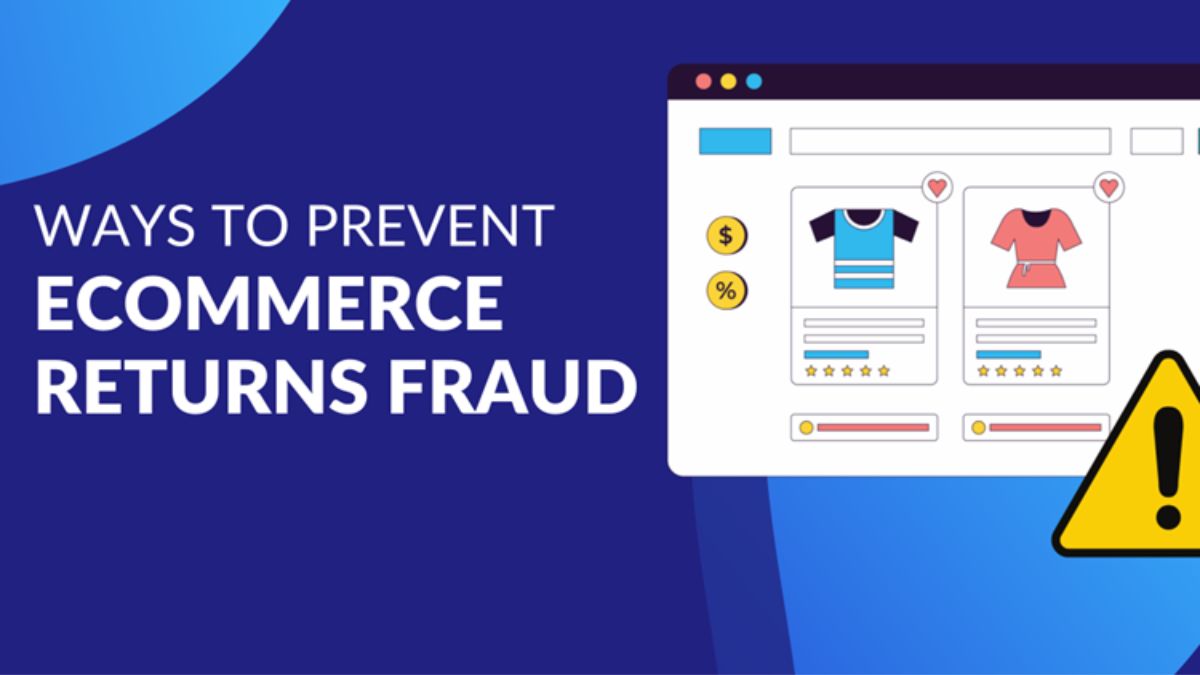How to Prevent Ecommerce Returns Fraud? : you’re running a successful online business, sales are booming, and customers are thrilled with your products. But then, out of the blue, you start noticing an alarming trend—returns are pouring in, and something just doesn’t add up.
According to the National Retail Federation, return fraud costs merchants $10.40 for every $100 in approved returns of goods.
Even though things are getting better, the damage remains. In 2022, online payment fraud alone cost retailers over $40 billion. It’s a serious issue that’s not going away anytime soon.
Looking ahead, experts predict that the market for spotting and stopping fraud online will more than double between 2023 and 2027, reaching over $100 billion. It’s a huge problem that needs everyone’s attention to solve.
In this blog, we’re going to equip you with the knowledge and strategies you need to protect your business from the menace of eCommerce returns fraud. We’ll dive into what exactly returns fraud is, how it can affect your bottom line, and most importantly, how to prevent it from happening to you.
Returns fraud comes in many shapes and sizes, from sneaky wardrobing tactics to counterfeit receipts and even identity theft. It’s a real headache for businesses, leading to financial losses and tarnished reputations. But fear not! By understanding the signs of fraud, implementing preventive measures, and empowering your employees, you can minimize the risks and keep your eCommerce ship sailing smoothly. By the end of this guide, you’ll be well-equipped to outsmart the fraudsters and build a fortress around your ecommerce operations.
Ready to tackle ecommerce returns fraud head-on? Let’s get started!
Understanding eCommerce Returns fraud
Returns fraud costs the retail industry billions of dollars each year. Returns fraud refers to deceptive practices where individuals exploit the return policies of ecommerce businesses for personal gain. This can take various forms, such as wardrobing, where customers purchase items with the intention of using them and then returning them for a refund. Other common forms include the use of fake receipts, identity theft, and even the return of counterfeit or damaged goods.
Common Signs of eCommerce Returns Fraud
A. Identifying red flags and suspicious patterns is essential in detecting eCommerce returns fraud early on. By being vigilant and observant, you can protect your business from potential losses. Keep an eye out for the following signs:
-
- Excessive returns: If you notice a customer consistently returning a high number of items or making frequent returns, it could be a cause for concern. Fraudsters often exploit return policies by engaging in excessive returns to obtain refunds or replacements for free.
-
- Inconsistent return reasons: Pay attention to customers who provide inconsistent or vague reasons for their returns. This could indicate attempts to conceal fraudulent activities or the use of false claims to obtain refunds.
-
- Serial returning: When customers repeatedly purchase and return similar or identical items, it may be an indicator of returns fraud. They might be exploiting your business by using products temporarily and then returning them.
Also Read: Ultimate Guide to Ecommerce Customer Retention
B. To better understand typical fraudulent behaviors and activities, let’s take a look at some examples:
-
- Wardrobing: This common form of returns fraud occurs when customers purchase items with the intention of using them once, such as for a special occasion, and then returning them for a refund. They essentially treat your business as a rental service, causing financial losses and potentially selling used items as new to other unsuspecting customers.
-
- Counterfeit returns: Fraudsters may attempt to return counterfeit or knock-off products to your business, claiming they received a counterfeit item instead of the genuine one. This allows them to obtain a refund while keeping the genuine product or receiving a genuine replacement.
-
- Receipt fraud: Scammers can forge or alter receipts to make it appear as if they made a legitimate purchase, even if they didn’t. They may then use the altered receipt to request a refund, tricking your system into thinking they are returning a purchased item.
-
- Identity theft: In some cases, criminals may use stolen identities to make fraudulent purchases and subsequently return the items for refunds. This type of fraud can be challenging to detect, as the fraudster may appear as a genuine customer on the surface.


How to Prevent eCommerce Returns Fraud
Implementing effective strategies to prevent ecommerce returns fraud is crucial for safeguarding your business and maintaining customer trust. Here are some key strategies to consider:
A. Implement a comprehensive returns policy:
-
- Specify clear and detailed return guidelines: Clearly outline your return policy, including acceptable reasons for returns, time limits, and any associated fees or conditions.
-
- Set time limits and conditions for returns: Establish reasonable timeframes for returns and consider implementing restocking fees for certain items or conditions.
B. Strengthen verification processes:
-
- Verify customer identities through multiple means: Utilize various methods to confirm customer identities, such as email verification, phone verification, address verification, or even identity verification services.
-
- Utilize fraud detection tools and technologies: Invest in fraud detection software or services that can analyze customer behavior, identify suspicious patterns, and flag potential fraud cases.
Prevent returns fraud with the powerful AI-driven returns fraud detection system of EcoReturns. It flags suspicious return and exchange requests along with possible reasons. It also gives you suggestions on how you can prevent fraudulent activity right from the dashboard. Know more about EcoReturns here.
C. Monitor and analyze customer behavior:
-
- Track and analyze return patterns and frequencies: Keep an eye on customer return histories to identify any unusual patterns or excessive return rates
-
- Identify anomalies and unusual return activities: Utilize data analytics to detect outliers or suspicious behaviors, such as sudden spikes in returns from specific customers or addresses.
Also Read: Best AI Applications in eCommerce
D. Improve packaging and labeling:
Use tamper-evident packaging: Employ packaging that shows visible signs of tampering, making it less attractive for fraudsters to engage in wardrobing or returning used items.
Employ unique identifiers and serial numbers on products: Utilize unique product identifiers or serial numbers that can be tracked throughout the return process, reducing the chances of counterfeit returns.
Build strong relationship with your customers
Building strong relationships with your customers is key to preventing ecommerce returns fraud and fostering loyalty. Enhancing communication channels is a great way to achieve this.
Provide detailed product descriptions and high-quality images that accurately represent your products, managing customer expectations and reducing the likelihood of returns due to misunderstandings.
Encourage customers to reach out to your support team for assistance before initiating returns, offering personalized guidance and troubleshooting to resolve any issues.
Furthermore, offering incentives for customer loyalty can go a long way in preventing fraudulent returns. Implement a rewards program or provide discounts for repeat customers, showing your appreciation for their continued support and encouraging them to choose your business over competitors. Prioritize customer satisfaction and loyalty and create a positive relationship that discourages fraudulent behavior and strengthens the integrity of your brand.
Final Say :
So, my fellow brand owners, it’s time to take action! Implement these strategies, stay informed about the latest fraud techniques, and remain vigilant. By doing so, you can create a safe and trustworthy environment for your business and customers alike. Together, we can protect our businesses and thrive in the world of eCommerce. Best of luck, and may your success be fraud-free!



